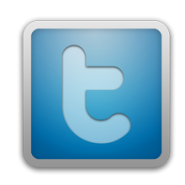
Twitter is a communication platform that helps businesses stay connected to their customers. As a business, you can use it to quickly share information with people interested in your company, gather real-time market intelligence and feedback, and build relationships with customers, partners and other people who care about your company. As an individual user, you can use Twitter to tell a company (or anyone else) that you’ve had a great—or disappointing—experience with their business, offer product ideas, and learn about great offers.
So how does it work? A brief history of Twitter.
Initially inspired by the concept of an ‘away-message’ merged with the freedom and mobility of SMS, Twitter began as an experiment in 2006. When value as an instant communication network during shared events like earthquakes, conferences, and festivals emerged, Twitter began to grow—Twitter, Inc. was founded in 2007. Today, Twitter is a privately funded company based in San Francisco, CA.
Twitter lets you write and read messages of up to 140 characters, or the very length of this sentence, including all punctuation and spaces. The messages are public and you decide what sort of messages you want to receive—Twitter being a recipient driven information network. In addition, you can send and receive Twitter messages, or tweets, equally well from your desktop or your mobile phone.
You don’t have to run a bike shop or a relatively small company to get good stuff out of Twitter. Businesses of all kinds, including major brands, increasingly find that listening and engaging on the service leads to happier customers, passionate advocates, key product improvements and, in many cases, more sales.
A key benefit
One of Twitter’s key benefits is that it gives you the chance to communicate casually with customers on their terms, creating friendly relationships along the way—tough for corporations to do in most other mediums.
But Twitter isn’t just about useful immediacy. The conversational nature of the medium lets you build relationships with customers, partners and other people important to your business. Beyond transactions, Twitter gives your constituents direct access to employees and a way to contribute to your company; as marketers say, it shrinks the emotional distance between your company and your customers. Plus, the platform lends itself to integration with your existing communication channels and strategies. In combination, those factors can make twitter a critical piece of your company’s bigger digital footprint.
For instance, let’s say you run a big retail website. In addition to learning more about what your customers want, you can provide exclusive Twitter coupon codes, link to key posts on your blog, share tips for shopping online, and announce specials at store locations. And you can take things a step further by occasionally posting messages about fun, quirky events at your HQ, giving others a small but valuable connection with the people in your company.
When you combine messages that are quick to write, easy to read, public, controlled by the recipient and exchangeable anywhere, you’ve got a powerful, real-time way to communicate. And real-time communication is turning out to be ground-breaking for users and businesses alike.





